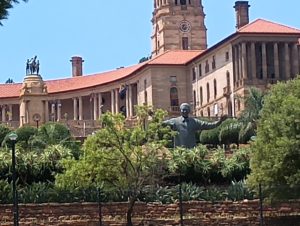On Memorial Day: Which Path for Ukraine?
Today, along with feeling gratitude for those millions of people over the US’s history who served in the military to defend democratic ideals, I’m feeling troubled that so much of the world still sees war as a way to solve problems.
War only creates problems. It doesn’t solve them. But when someone else starts an aggressive war, are there other choices?
The war in Ukraine has been going on for about 15 months, since Putin’s invasion. Some people say it’s been going on since 2014, when he annexed the Crimea. Putin certainly had other choices–but once he invaded, did Ukraine?
Yesterday, I came across two very different perspectives that both feel to me like they have validity, even though they contradict each other.
A withdrawal of US support from Ukraine at this point would not lead to peace; it would lead to the most horrifying climax of the war. Russia would simply deliver its final brutal blow to Ukraine, pummeling it to the point where it would no longer exist as a separate nation…
Regardless how we got here, our only choice at this point is to either support Ukraine or to not. While the United States should do everything possible to support a negotiated settlement, our goal should also be a negotiated settlement in which Ukraine still has a chance to exist.
But she recognizes the need to address the root causes:
The best way to solve conflicts is to prevent them from occurring to begin with, and if I had had the choice, I would have made very different foreign policy decisions related to Russia over the last 40 years. We must set an entirely new and different trajectory of military involvement in the world, one in which we are not the world’s policeman but rather the world’s collaborator in creating a world in which war is no more.
And it’s important to remember those decisions she hints about. I hear so many people express bewilderment that Putin attacked, without a cause that they see and understand. But the reality is that while war is absolutely the wrong way to solve them, Putin does have legitimate reasons for concern, particularly regarding the question of whether Ukraine should join several other former Soviet republics as a NATO member.
Well to the left of Williamson (the most progressive candidate in both the 2020 and 2024 US presidential elections, so far) is Stephen Zunes. Earlier this week, Zunes participated in a team debate at Oxford. On the opposing team was ultra-right-wing former US Ambassador to the UN and National Security Advisor John Bolton. While Bolton’s team went on about the need to defend democracy by force in order to make it clear that aggression has consequences,
Zunes however further cautioned against intervention. “Before we start talking about fighting dictatorships, we should stop propping up dictators”, he advised, highlighting the fact that 57% of the world’s dictatorships receive arms from the US. Instead, he appealed to the success of nonviolent methods.
And in fact, nonviolent methods were very prominent in the Ukrainian early resistance.
Meanwhile, one of the other team members arguing against militarized intervention pointed out that the US’s claim that it’s a democracy is a lot weaker than it was:
Closing the debate, Peter Galbraith argued that we must use the effectiveness test when determining whether to fight for democracy. “Yes, there are times we should fight and we have fought successfully,” he proclaimed, but “the wars in Afghanistan and Iraq demonstrate why it is not feasible to fight for democracy outside the West.” He criticised the Reagan administration’s embracing of Pinochet, under which Bolton served at the time.
Galbraith further argued that both an independent judiciary and political parties accepting election results are essential features of a successful democracy – neither of which the US possesses. He claimed that the Supreme Court has “become more partisan, more extreme right wing, more an instrument of the Republican Party” since 2000. This is referencing George W Bush’s electoral victory in Florida, where a divisive landmark Supreme Court ruling stopped the recount of votes. If the count hadn’t been stopped, Bush’s opponent Al Gore could potentially have won…
Galbraith concluded: “Rather than looking for authoritarian dragons to slay far from home, America should be fighting to save our democracy at home.”

 Check out this
Check out this